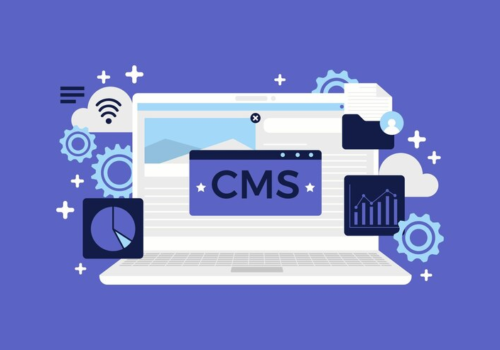Umbraco vs WordPress: In-Depth CMS Review for 2023
Umbraco and WordPress are two popular content management systems (CMS), each with unique features and advantages.
Here’s a comparative analysis of these platforms:
Technical Foundation
- WordPress: Operating on the PHP programming language, WordPress stands out as an open-source platform, which has contributed significantly to its immense popularity. This accessibility allows users from around the world to contribute to and modify the code, fostering a dynamic and evolving platform. WordPress’s extensive library of plugins and themes is one of its most attractive features, offering users the ability to easily customize and extend the functionality of their websites without needing deep coding knowledge. The availability of these add-ons means that WordPress can be tailored to a wide range of needs, from simple blogs to complex e-commerce sites. However, this reliance on plugins and themes can sometimes lead to issues with compatibility and performance, particularly when they are not regularly updated or are poorly coded. The open-source nature of WordPress also means a vibrant community contributes to its development, constantly adding new features and improvements. This makes WordPress not just a CMS but a continually evolving digital ecosystem, accessible to users ranging from hobbyists to large corporations.
- Umbraco: Umbraco, running on Microsoft’s .NET framework, is another open-source CMS but it particularly appeals to developers who are versed in or prefer Microsoft technologies. This preference is largely due to the robust, scalable, and secure environment that .NET offers, making Umbraco a strong candidate for enterprise-level applications and websites. Unlike WordPress, Umbraco provides a more streamlined approach to plugins and themes, focusing on delivering a more cohesive and integrated development experience. This approach tends to attract a community of professional developers and larger organizations that require a high degree of customization and control over their web projects. Umbraco’s architecture allows for deep integration with other business systems, which is essential for complex digital ecosystems. It offers a flexible content management system that can handle large-scale content operations, making it ideal for media-rich websites, intranets, and e-commerce platforms. Despite its professional leanings, Umbraco maintains a user-friendly back-end, ensuring that content managers and marketers can easily navigate and manage the site.
WordPress and Umbraco both offer robust open-source solutions but cater to different audiences. WordPress, with its PHP base, is known for its ease of use and vast range of plugins and themes, making it suitable for a broad audience. In contrast, Umbraco, leveraging the .NET framework, attracts a more developer-focused community, offering advanced customization and integration capabilities suited for complex and large-scale web projects.
User Experience
- WordPress: The user interface of WordPress is renowned for its simplicity and intuitiveness, making it a highly accessible platform for users with varying levels of technical expertise. This ease of use is one of the key reasons for its widespread adoption among bloggers, small businesses, and even non-profit organizations. WordPress’s dashboard provides a straightforward, clean environment where users can easily navigate to create and manage content, install plugins, customize themes, and configure settings. For bloggers and small business owners, this simplicity means less time spent on learning the platform and more on creating content and managing their online presence. Moreover, the visual editor in WordPress allows for a ‘what you see is what you get’ (WYSIWYG) experience, simplifying the process of designing pages and posts. This user-friendliness extends to its installation and initial setup, which can be done with minimal technical knowledge, making it an ideal choice for individuals and small organizations looking to establish an online presence quickly and efficiently;
- Umbraco: In contrast, Umbraco offers a more flexible and advanced interface that caters to the needs of large corporations and complex sites. Its content management capabilities are robust, providing a high degree of customization and control over website structure and content. Umbraco’s interface is designed to handle complex content hierarchies and relationships, making it ideal for sites that require detailed content organization, such as multi-language sites or those with a large volume of interconnected content. The platform allows developers to create custom content types and templates, giving them the power to build unique and tailored web experiences. This level of flexibility and control is particularly beneficial for large corporations that have specific requirements and standards for their digital presence. Although Umbraco’s interface might have a steeper learning curve compared to WordPress, it offers a more powerful and versatile environment for managing sophisticated websites, which is a critical requirement for large-scale enterprises and complex digital projects.
WordPress offers an easy-to-use interface that’s perfect for individuals and small businesses focusing on simplicity and ease of content creation. In contrast, Umbraco provides a more flexible and sophisticated interface with advanced content management capabilities, catering to the needs of large corporations and websites with complex structures and requirements. The choice between these platforms should be guided by the scale of the project and the level of customization and control required.
Customization and Flexibility
- WordPress: One of WordPress’s most appealing features is its ease of customization, facilitated by a vast library of themes and plugins. With thousands available, many of which are free or relatively inexpensive, users can significantly alter the look and functionality of their site without needing extensive coding knowledge. This vast selection makes WordPress highly adaptable for a wide range of uses, from simple blogs to more complex e-commerce sites. However, the platform can have limitations when it comes to very specific or unique requirements. While plugins and themes offer substantial customization options, they sometimes fall short for highly specialized needs or very intricate, custom functionality. Over-reliance on plugins can also lead to issues like website bloat, slower performance, and potential security vulnerabilities. In cases where unique, bespoke features are required, WordPress might require extensive custom coding, which can diminish its ease-of-use advantage and necessitate skilled developer involvement;
- Umbraco: In contrast, Umbraco provides a high level of control over both development and customization, which is a boon for developers seeking flexibility. Its architecture allows for deep customization, enabling developers to tailor the CMS to fit exact specifications and complex requirements. This control extends to every aspect of the website, from the front-end user experience to the back-end content management. Umbraco’s flexibility is particularly advantageous for large-scale, enterprise-level websites where unique features and functionalities are often required. The platform allows for the creation of custom content types, bespoke workflows, and intricate data structures, all of which are essential for complex digital ecosystems. While this level of customization requires a higher degree of technical skill, it provides a powerful framework for developers to build sophisticated, high-performing websites that align precisely with specific business needs.
WordPress offers an easy and accessible way to customize websites, ideal for users with general requirements. On the other hand, Umbraco offers enhanced control and flexibility, making it a preferred choice for developers working on complex or highly customized projects. The decision between these two platforms often hinges on the balance between the need for easy customization and the requirement for detailed, developer-driven control and flexibility.
Community and Support
- WordPress: Boasting one of the largest and most active communities in the web development world, WordPress provides an unparalleled wealth of support and resources. This vast community consists of millions of users, developers, and enthusiasts who actively contribute to forums, blogs, online courses, and social media groups. The advantage of such a large community is the extensive peer support available; virtually any question or issue one might encounter has likely been addressed and documented. There are thousands of tutorials, guides, and videos available for free, covering every aspect of using and developing with WordPress. Additionally, numerous global WordPress events, like WordCamps and meetups, offer opportunities for learning and networking. This community-driven support makes WordPress particularly appealing to beginners and those with limited technical expertise, as help and guidance are always readily available. For businesses, this means a vast pool of talent and resources to tap into for building, maintaining, and enhancing their websites;
- Umbraco: While smaller in comparison to WordPress, the Umbraco community is a dedicated and growing group of professional developers and users. This community, though lesser in numbers, is known for its quality, professionalism, and a strong sense of collaboration. It provides a range of resources, including detailed documentation, an active forum, and a marketplace for extensions and plugins. Umbraco’s community also organizes local meetups and an annual conference, Codegarden, which attracts developers and users from around the world. The focus in the Umbraco community is often on professional development and advanced usage, catering to the needs of developers and large-scale project teams. For businesses using Umbraco, this means access to a network of experienced professionals and high-quality resources, albeit with a more technical and professional orientation than the WordPress community.
WordPress leads with its massive, diverse community, offering extensive support and resources for users of all skill levels. Umbraco, while smaller in community size, compensates with a focused, professional network providing quality resources and support, particularly beneficial for developers and larger, more complex projects. Both communities reflect the ethos and user base of their respective platforms, with WordPress being more accessible to a broader audience and Umbraco catering to professional development needs.
Security
- WordPress: As the most popular CMS globally, WordPress is often a target for hackers and malicious attacks. This vulnerability is partly due to its widespread use, making it a lucrative target for those looking to exploit security weaknesses. The open-source nature of WordPress, while a strength in terms of community and development, also means that its code is accessible to everyone, including potential attackers. The security of a WordPress site is heavily dependent on regular maintenance, including timely updates of the core system, themes, and plugins. These updates often contain patches for security vulnerabilities that have been identified. Unfortunately, many users neglect this aspect, leaving their sites open to attacks like SQL injections, cross-site scripting (XSS), and brute-force login attempts. Additionally, the use of numerous third-party plugins can introduce security risks, especially if those plugins are not regularly maintained or come from untrustworthy sources. For businesses and individuals using WordPress, implementing strong security measures and maintaining best practices for updates is essential for protecting their online presence;
- Umbraco: In comparison, Umbraco is generally considered more secure, partly due to its smaller user base and the robustness of the .NET framework it’s built on. While no system is entirely immune to security threats, Umbraco’s architecture offers some inherent protections that make it less vulnerable to common web attacks. The frequency of security issues in Umbraco is less compared to WordPress, but when they do occur, they can be just as impactful. Umbraco’s security model is highly configurable, allowing developers to implement strong security protocols tailored to their specific needs. This includes customizing user permissions, securing data access, and managing sensitive content. The platform’s reliance on professional developers for setup and maintenance means that security is often considered from the outset, reducing the risk of vulnerabilities due to neglect or misconfiguration. However, it’s important for businesses using Umbraco to engage with knowledgeable developers who understand the security landscape and can keep the system and its components up to date against emerging threats.
While WordPress requires vigilant maintenance and updates to safeguard against its popularity among hackers, Umbraco’s more secure foundation offers a level of inherent protection. However, both platforms necessitate a proactive approach to security, with WordPress demanding regular updates and Umbraco benefiting from professional, security-conscious development practices.
Performance
- WordPress: Known for its user-friendliness, WordPress is the go-to choice for many due to its intuitive dashboard and easy content management processes. However, its performance can be significantly impacted by the number and type of plugins used. While plugins add functionality, overuse or use of poorly coded plugins can slow down the website, affecting load times and overall user experience. Additionally, WordPress sites might struggle with high traffic loads if not properly optimized or hosted on robust servers. The platform’s versatility, while a strength, can become a liability if not managed carefully. Regular maintenance, such as updating plugins and themes, optimizing images, and using caching mechanisms, is crucial to ensure optimal performance. For businesses, this means balancing the ease of adding features through plugins with the need for speed and efficiency, especially as their web presence grows;
- Umbraco: In contrast, Umbraco offers robust performance capabilities, particularly for custom and complex websites. Its strength lies in its flexibility and the efficiency of the .NET framework it’s built on. This makes it ideal for websites that require customized solutions or have to handle large volumes of content and data. Umbraco’s architecture allows for better control over the website’s structure and functionality, enabling developers to optimize performance and scalability as needed. This CMS is less reliant on third-party plugins, reducing potential performance bottlenecks. It is particularly favored for corporate websites, intranets, and applications that require a high degree of customization. The ability to fine-tune and tailor every aspect of the site, from content management to user experience, makes Umbraco a powerful tool for businesses that have specific, often complex, requirements for their online platforms.
WordPress offers an easy-to-use platform but faces performance challenges with extensive plugin use. On the other hand, Umbraco, with its robust .NET foundation, excels in delivering high performance for custom and complex websites, making it ideal for businesses with specific, large-scale digital needs. The choice between WordPress and Umbraco should be guided by the balance between ease of use and the need for custom, high-performance solutions.

SEO Capabilities
- WordPress: Excellent SEO capabilities, enhanced by various SEO plugins;
- Umbraco: Provides good SEO tools but might require more technical expertise to optimize fully.
Scalability
- WordPress: Suitable for small to medium-sized websites, WordPress is renowned for its ease of use and wide range of themes and plugins, which makes it a favorite for bloggers, small businesses, and even e-commerce sites using WooCommerce. However, when it comes to very large-scale websites, WordPress can face challenges. The platform may experience performance issues as the site grows in size and complexity, especially if not optimally configured. High traffic volumes can also strain WordPress sites, particularly those on shared hosting environments or those using numerous plugins. Customizations for large-scale operations often require significant development work, which can negate some of the ease-of-use benefits that WordPress is known for;
- Umbraco: On the other hand, Umbraco is highly scalable, making it an excellent choice for large enterprises and complex web applications. Its robust framework, built on Microsoft’s .NET technology, allows for handling large amounts of data and traffic efficiently. Umbraco’s flexibility in design and development makes it a preferred choice for custom-built websites that require unique functionalities. It’s particularly well-suited for organizations that have specific content management needs, such as media libraries, custom data types, or intricate user permissions. Large enterprises often favor Umbraco for its ability to integrate seamlessly with other business systems and for the high level of control it offers over content and site structure. Although it might require a steeper learning curve and more technical expertise compared to WordPress, the scalability and flexibility benefits of Umbraco are significant for substantial web projects.
While WordPress excels in user-friendliness and community support, making it ideal for small to medium-sized websites, Umbraco stands out for its scalability and flexibility, catering especially to the needs of large enterprises and complex web applications. The choice between the two should be based on the specific requirements and scale of the website project in question.
To Wrap Up
In conclusion, the choice between Umbraco and WordPress depends on specific project requirements, technical preferences, and the scale of the website. WordPress is user-friendly and ideal for standard websites, while Umbraco offers more flexibility and control for complex and large-scale web projects.





